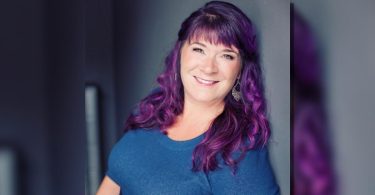The El Rio Birth & Women’s Health Center in Tucson, Arizona
The El Rio Community Health Center in Tucson, Arizona has become a destination clinic for the state’s transgender youth.
Since 2014, Dr. Andrew Cronyn and Dr. Tracey Kurtzman have gone from seeing one transgender patient to 75. The 75 trans patients the two doctors see at El Rio range in age from 4 to 19.
The Southern Arizona Gender Alliance estimates that 1,000-1,500 trans youth live in the Tucson area. Yet, the patients come to the clinic not just from Tucson, but other Arizona cities including Phoenix, Flagstaff, and Safford.
Trans youth and puberty
A decade ago, Cronyn would have told these children to wait till they’re 18 to medically transition. However, he would never give that advice now.
‘A lot of kids are still getting that advice,’ he told Tucson.com. ‘But what we now know is waiting can put kids through agony in their teen years.’
A 2013 report by the American Academy of Pediatrics’ Committee on Adolescence noted that medical treatment for trans youth aren’t standardized, nor approved by the Food and Drug Administration (FDA). However, the report states this treatment is ‘increasingly supported by medical literature.’
Puberty is a rough time for all kids—especially trans kids. Despite article after article about why trans kids should wait to transition, experts in the field, like Cronyn and Kurtzman, think it’s actually beneficial to let transgender youth be who they are early on.
Cronyn believes that putting trans youth on puberty blockers and cross-gender hormones may end up improving their mental health.
‘Delaying puberty does not hurt the child. It can keep the breasts from developing and the menses from happening, and give the child an opportunity to reach adulthood and then make the decision,’ explains Erin Russ, director of programs for the Southern Arizona Gender Alliance.
Puberty blockers, which pause the onset of puberty, are entirely reversible. The child can decide to stop them and go through puberty naturally, or to continue their transition with cross-hormone treatments.
The doctors at El Rio are regularly in dispute with insurance providers to pay for the appropriate doses of puberty blockers. Though they have been declared safe by the International Endocrine Society, they can cost up to $30,000 [£21,296; €24,393] per year if insurance won’t pay.
First trans patient
The first trans patient seen at the El Rio clinic was an 8-year-old trans boy. He had left his previous doctor for insisting that he was a girl since he was born with a vagina.
‘It was almost unbelievable. The child had chronic medical issues that weren’t being dealt with because the provider was so focused on the transgender part,’ Cronyn recalls.
After this, word got out to other trans children and their families that Cronyn was supportive and open to helping transgender youth. This led to more transgender kids seeking treatment at El Rio.
Cronyn cares for trans patients with three simple steps that he now trains other medical providers to use, too. They include calling the patient by their preferred name (not the name on their official documents), acknowledging the patient’s gender identity, and not looking at the patient’s genitalia unless it’s medically necessary.
El Rio leads the way
Anyone hired at El Rio goes through a training course in caring for marginalized populations, including the LGBTI community. In fact, El Rio was listed in the Human Rights Campaign’s 2018 Healthcare Equality Index as one of 418 health organizations leading the country in medical care for LGBTI people.
In addition to trans medical care, Cronyn and Kurtzman have also been a resource for families who have questions—such as how a trans boy can join Little League, where they can take their children for haircuts without judgement, where to buy clothes, and how to get legal documentation that reflects their child’s gender identity.
‘El Rio made it possible for more families to get medical care for their kids,’ Russ says. ‘Kids now have the opportunity to develop the way they want to.’







